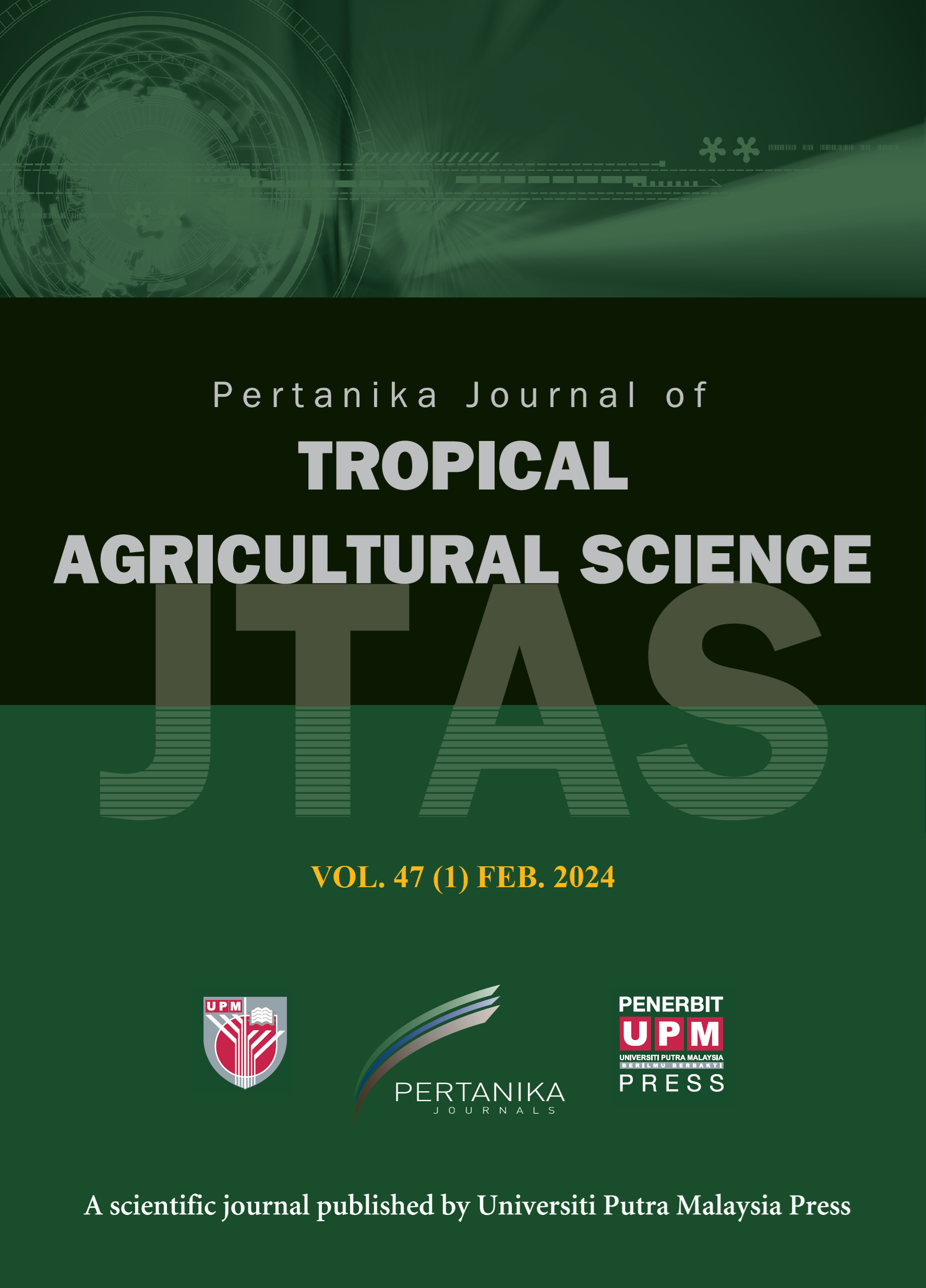PERTANIKA JOURNAL OF TROPICAL AGRICULTURAL SCIENCE
e-ISSN 2231-8542
ISSN 1511-3701
Robust Assessment of Body Weight and Linear Body Measurements of Nigerian Normal Feather Chickens using Bayesian Inference
Adeyemi Sunday Adenaike, Olamide Blessing Shonubi, Olajide Olowofeso, Mathew Wheto and Christian Obiora Ndubuisi Ikeobi
Pertanika Journal of Tropical Agricultural Science, Volume 42, Issue 1, February 2019
Keywords: Bayesian, body dimension, indigenous, model
Published on: 25 Feb 2019
Previous studies on the relationships between body weight and morphometric indices in chickens have been mainly on classical analysis with assumptions that, data have normal distribution and constant variances. A more reliable assessment of body weight and morphometric indices requires a Bayesian multiple linear regression with assumptions of unequal variances. Body weight and nine morpho-structural traits of 234 Nigerian indigenous normal-feather chickens were measured using weighing scale and measuring tape at sixteen weeks. Two different regression models (weighted and unweighted) were fitted in Winbugs software to obtain Bayesian inference for each sex. Predicted relationships between body weight and shank length, thigh length, keel length, body length, wing length and breast girth were positive and ranged from 0.272 ± 4.972 to 101.5 ± 24.56. Shank diameter, tail length and wing span had negative relationships with body weight and estimates ranged from –15.94 ± 12.31 to –4.608 ± 59.86. Goodness of fit of models was assessed using Bayesian p–value, Deviance information criterion (DIC) and graph of residuals against predicted values under each model. The Bayesian p–value (0.502) for unweighted model for male chicken was closed to 0.5 compared to its weighted counterpart (0.573). This implied that weighted model fitted relationship between body weight and morpho-structural traits in Nigerian normal-feather male chicken compared to unweighted model. The differences in DIC and Bayesian p–values and residuals' plot against predicted values of weighted and unweighted regression models were sufficient for us to believe that weighted models fitted body weight and morpho-structural traits data better than unweighted models.
ISSN 1511-3701
e-ISSN 2231-8542




